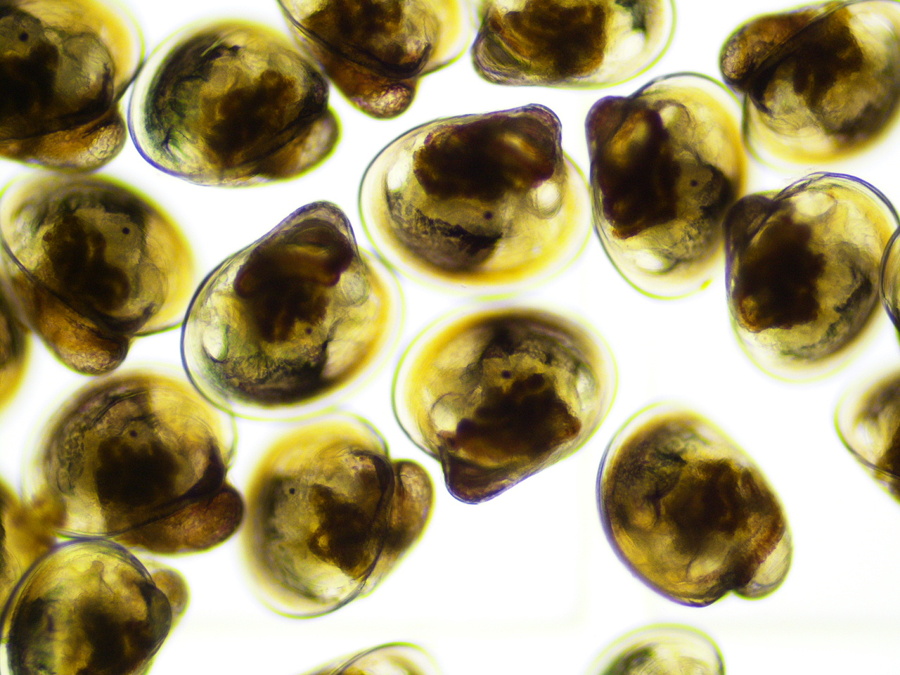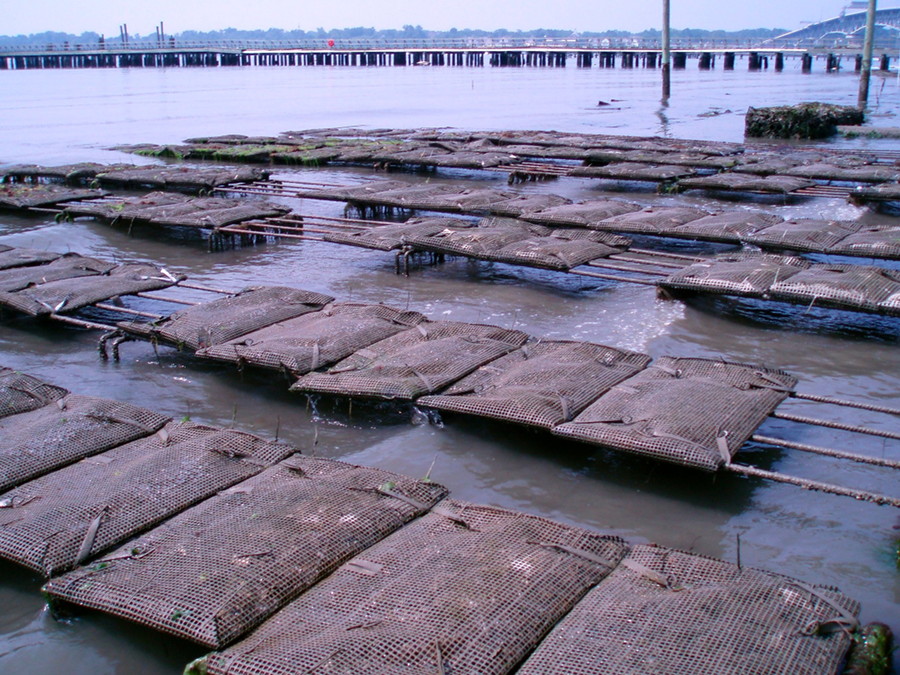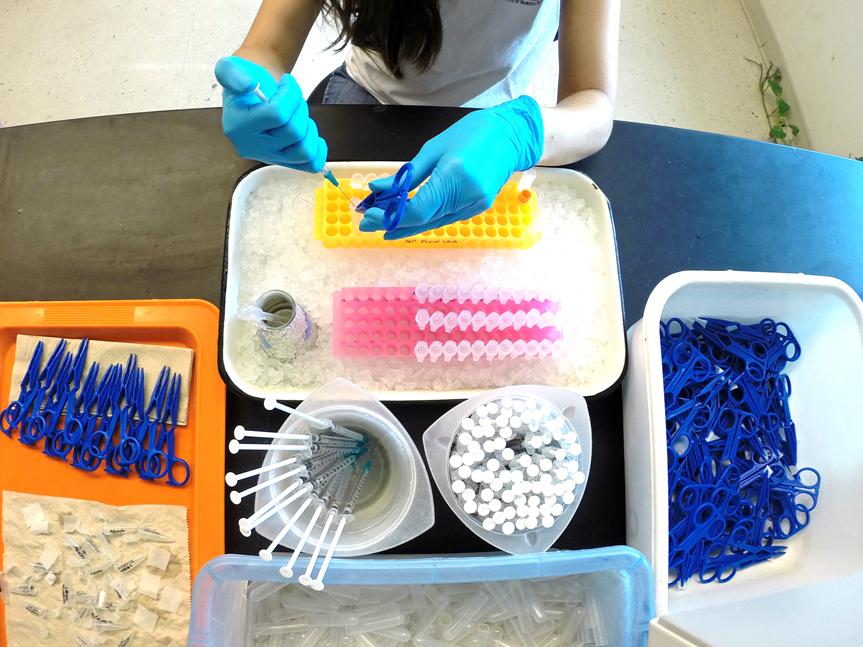About
 The scientists of the Aquaculture Genetics and Breeding Technology Center (ABC) at VIMS use a combination of selective breeding and genetic research to domesticate the native eastern oyster Crassostrea virginica for aquaculture and to improve on its traits. Traits we are currently focusing on include survival, growth rate, shape, and meat yield. C. virginica has a long history of both commercial and ecological importance in the Chesapeake Bay.
The scientists of the Aquaculture Genetics and Breeding Technology Center (ABC) at VIMS use a combination of selective breeding and genetic research to domesticate the native eastern oyster Crassostrea virginica for aquaculture and to improve on its traits. Traits we are currently focusing on include survival, growth rate, shape, and meat yield. C. virginica has a long history of both commercial and ecological importance in the Chesapeake Bay.

Since its establishment at VIMS in 1997 by the Virginia General Assembly, ABC’s work has helped revitalize and improve the economic value of oysters in the Bay and encouraged rapid growth of the local oyster aquaculture industry.
To learn more about the current status of oyster and clam aquaculture in Virginia, access the annual Shellfish Outlook reports produced by VIMS' Marine Advisory Program.

The primary focus of our program is to provide genetically superior broodstock to the aquaculture industry. Initial breeding efforts emphasized development of disease-tolerant strains of C. virginica that could withstand pressure from MSX and Dermo. Next, efforts focused on the improvement of production traits like growth rate and meat yield. Today, ABC continues to improve on these traits, while also investigating what other heritable traits might be of commercial interest and importance in the future. The oyster breeding program developed by ABC is the most extensive in the United States, and arguably, the largest in the world.
Take a closer look at ABC's history and mission statement.
{{youtube:medium|odQFazJlF8E, Learn more with a virtual hatchery tour!}}

